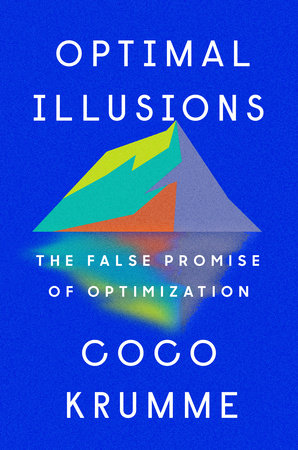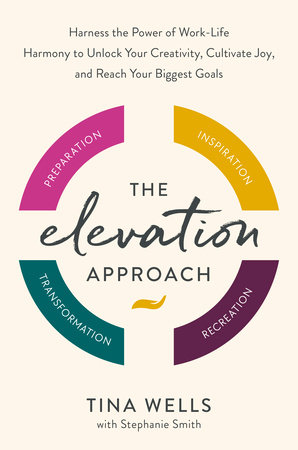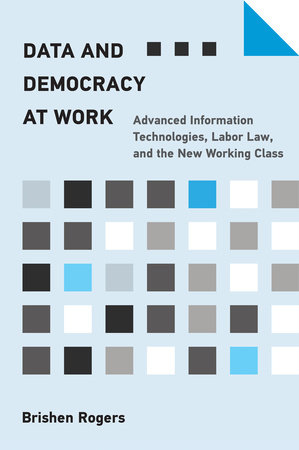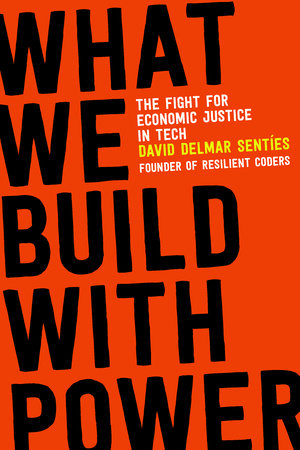Quick Summary
One sentence summary
In “The New Case for Gold,” James Rickards defends gold as an essential asset for financial security in an era of digital currencies and unstable economies.
Big idea
Rickards’ central thesis is that despite modern financial systems’ complexity, gold remains a crucial hedge against potential digital vulnerabilities, currency devaluation, and fiscal instability, offering a timeless refuge for investors.
Five key ideas
- History Repeats: Gold has been a proven store of value across centuries, outlasting currencies and economic systems.
- Digital Dangers: Our digital financial world is at risk of hacking and cyber warfare, making the tangible security of gold more appealing.
- Currency Wars: With nations engaging in devaluating their currencies to boost export competitiveness, gold stands firm as a neutral asset.
- Debt Dilemma: Global debt is reaching unsustainable levels, threatening the value of currencies and leading to potential financial crises where gold could be a safe haven.
- SDR and Gold: Special Drawing Rights (SDR) may signal a shift in global reserve currencies, a scenario where gold could play a pivotal stabilizing role.
Actionable advice
Consider allocating a portion of your investment portfolio to gold to safeguard against inflation, currency devaluation, and financial system shocks.
About the author
James Rickards is a financial expert, lawyer, and author known for his expertise in gold and currency markets, with previous notable works like “Currency Wars” and “The Death of Money” that delve into the intricacies of the financial landscape.
Read next
For those looking to broaden their understanding of economics and finance, consider “Currency Wars” by James Rickards for a deep dive into global fiscal competition, or “This Time Is Different” by Carmen Reinhart and Kenneth Rogoff, which explores eight centuries of financial folly. To better understand the modern digital financial revolution, “The Age of Cryptocurrency” by Paul Vigna and Michael J. Casey is a must-read.
In Depth
History Repeats: Gold’s Timeless Value
Gold’s allure is not just in its luster but in its history. It’s been the backbone of economies, outliving empires and currencies alike. Rickards doesn’t just wax poetic about gold; he provides hard-hitting analysis on why it endures. For instance, take the collapse of the Roman Empire—when the denarius lost its value, gold remained a medium of exchange.
Rickards digs into the 20th century, highlighting when the British pound relinquished its status as the world’s reserve currency. Despite the global shift to the US dollar, gold’s value remained stable, even appreciating. It’s the ultimate financial chameleon, adapting to economic upheavals while retaining its worth.
In more recent times, the financial crisis of 2008 is a stark reminder of gold’s resilience. When banks tottered on the brink and currencies wavered, gold surged. It’s the go-to when confidence in paper currencies falters, serving as a financial lifeboat.
The book provides a detailed example of gold’s enduring power during the Great Depression. Countries that abandoned the gold standard, like the United States in 1933, saw their economies shrink and currencies falter. Meanwhile, those that clung to gold, like France and Italy, had lesser economic distress. Rickards points out, “Countries that remained on a gold standard, or returned to one quickly, recovered quickly. Those that didn’t, sank into prolonged depression.”
Rickards is unequivocal about gold’s role:
“Gold is money par excellence because it is indestructible, it cannot be created at will by governments, and it has intrinsic value that is not contingent on any human promise, contract, or law.”
This quote embodies the book’s stance on gold’s unwavering stature in the global financial order. It’s not an antique relic; it’s a financial anchor. When the world is knee-deep in debt and currencies are being printed at a whim, gold stands apart. It’s not just another commodity but a bastion of stability in a sea of economic uncertainty.
His argument is solidified with a clear-eyed view of gold’s fungibility—how it can be interchanged and accepted globally, without question. Unlike stocks, bonds, or even real estate, gold is universally recognized and accepted as a store of value. Its acceptance doesn’t hinge on a particular economic ideology or government backing. This universal fungibility ensures that wherever you are, gold retains its value and purchasing power.
Rickards’ emphasis on gold’s historical record is a sobering counterpoint to the flashy, fast-paced world of digital currencies and stock markets. While the latter grab headlines and create overnight millionaires, gold’s steady, less glamorous climb is what endures over time. It’s this long-term view that underpins Rickards’ thesis and serves as a clarion call to those looking to protect their wealth from the unpredictable waves of economic change. In his perspective, betting on gold is not just about looking backward—it’s about ensuring stability for the future.
Digital Dangers: Cybersecurity and the Case for Gold
Our online banking, investing, and even currency have a soft underbelly: cybersecurity. Rickards doesn’t tiptoe around this. He dives straight into the murky waters of digital vulnerability. Imagine waking up to find your bank accounts wiped clean. It’s not a plot from a dystopian novel—it’s a real threat in our cyber-dependent world.
The 21st century has ushered in the era of digital finance, but with every online transaction, we open a door to potential digital theft. Rickards hammers this home with the example of the 2016 Bangladesh Bank heist. Hackers infiltrated the bank’s security systems and made off with $81 million. This breach was not just a wake-up call—it was a siren blaring across the financial landscape, signaling the fragility of our digital financial world.
Rickards highlights that:
“In an age where a hacker can steal millions with a few keystrokes, gold stands out as the tangible, unhackable, and solid asset it has always been.”
He’s pushing us to see that gold, unlike digital currencies or assets, can’t be erased with a click or duplicated with code. It’s physical—immutable to the cyber plagues that threaten our online wealth. In Rickards’ view, cyber threats are the Achilles’ heel of the digital financial system, and gold is the shield that can protect us.
He’s not wrong. With cybercrime escalating, gold’s physicality is its trump card. You can’t hack a gold bar. There’s no backdoor in a vault. This is the crux of Rickards’ second key point: in an era where our financial security is as strong as our weakest password, gold offers an off-the-grid store of value that’s immune to the digital decay threatening our bank accounts.
And it’s not just about theft. Rickards points out that the digital financial system is also susceptible to state-sponsored attacks. A cyber-warfare scenario could potentially cripple an economy by targeting its digital financial infrastructure. But gold? It’s immune to such attacks. It sits in the physical world, beyond the reach of malware and hackers.
Gold’s impervious nature to cyber threats is a cornerstone of Rickards’ argument for its inclusion in any well-rounded investment portfolio. As we navigate an increasingly digital economy, Rickards’ insights suggest that gold can act as a form of cyber insurance, safeguarding a portion of one’s assets against the unseen dangers lurking in the digital shadows.
The takeaway is potent and clear: as our financial systems become more complex and interconnected, the risks compound. In this new digital battlefield, gold’s simplicity and tangibility are not just desirable—they’re essential. It’s a call to not get swept up in the digital wave but to have a lifeline to the solid ground of gold.
Currency Wars: The Devaluation Battlefront
In the battlefield of global trade, currencies are the weapons and devaluation is the strategy. Rickards pulls no punches describing how countries intentionally weaken their currencies to gain a competitive edge in exports. It’s economic warfare, with central banks as the generals and exchange rates as the moving front lines.
He zooms in on the concept of ‘beggar-thy-neighbor’ policies, where one country’s gain in trade is another’s loss. A prime example is the competitive devaluations that took place during the 1930s, which exacerbated the Great Depression. Rickards draws parallels with the modern-day “race to the bottom” mentality, where countries are slashing the value of their currencies to stay competitive.
The book gives a real-world scenario with China’s yuan. When China devalued the yuan in 2015, markets around the world plummeted. The move was strategic, aimed at making Chinese goods cheaper on the global market. It’s a direct hit in the ongoing currency wars that Rickards describes.
He drives the point home with a stark warning:
“In the face of currency wars, gold is like Switzerland—neutral, reliable, and always in demand.”
This comparison to Switzerland characterizes gold as the solid ground above the mire of currency devaluation. Rickards argues that unlike fiat currencies, gold can’t be printed or devalued at the whim of a government policy. It’s an asset that stands independent of monetary policies and competitive devaluations, maintaining its purchasing power while paper currencies fluctuate wildly around it.
In Rickards’ view, gold is the victor in the currency war because it’s the only player that doesn’t have to fight. Its value isn’t tied to a flag or a fiscal policy, making it a refuge for investors when currency instability hits.
When central banks start their printing presses, it’s gold that often sees the benefit. Investors flock to it, seeking shelter from the inflationary storms caused by excess currency flooding the market. Rickards suggests this as a historical pattern, reinforcing gold’s role as a safe haven during times of currency turbulence.
This part of Rickards’ argument is a clarion call to those who watch the value of their currency ebb and flow with government decisions. Gold’s immunity to competitive devaluation is not just a matter of historical record; it’s a contemporary investment strategy. It’s about putting your trust in the weight of gold rather than the print of a banknote.
By holding gold, investors are essentially stepping out of the crossfire of the currency wars. They’re choosing a path that has stood the test of time, resistant to the economic manipulations that characterize our current global financial system. It’s a strategy that favors stability in a world where currency values are as volatile as the geopolitical winds that shift them.
Debt Dilemma: The Looming Financial Crisis
The world is drowning in debt, and Rickards doesn’t shy away from calling it a crisis in the making. Governments and central banks have racked up IOUs that could choke economic growth and possibly trigger a financial meltdown. It’s a precarious situation, where the balancing act of managing national debts could falter at any moment, and gold’s steadiness becomes ever more crucial.
Rickards points to the United States, where the national debt has ballooned to staggering levels. He’s critical of the fiscal gymnastics used to keep the economy afloat, with quantitative easing and low interest rates. This isn’t sustainable. As Rickards puts it, “The confidence game is all that backs the dollar,” which he views as a shaky foundation for the world’s primary reserve currency.
In the book, he lays out the 2008 crisis as a chilling reminder. Lehman Brothers, a giant in banking, collapsed under the weight of its leveraged assets, setting off a domino effect. It was a wake-up call, a glimpse into what happens when debt gets out of hand. Rickards uses this to illustrate a broader point:
“When the next crisis hits, the last resort will be a rush to gold—the one asset that doesn’t rely on someone else’s promise to pay.”
This is the crux of his argument: gold isn’t just another asset. It’s the lifeboat for when the ship of debt-fueled finance sinks. Unlike national currencies, which are vulnerable to the whims of policymakers and the ebb and flow of the economy, gold stands apart. It’s not owed to anyone and thus can’t default.
Gold’s appeal, as Rickards sees it, is in its immunity to the credit risk that is inherent in nearly all other financial instruments. Bonds, stocks, and even real estate are all tied to promises of payment—promises that might be broken if the debt crisis spirals out of control. Gold requires no such promises. It’s the ultimate bearer instrument; if you have it, you own it, with no counterparty risk.
His message is a sobering one for investors: As long as the debt levels continue to soar, the risk of a catastrophic financial event looms over us. The smart money, in his view, is on gold, which has retained its value through countless debt crises over the centuries.
Rickards doesn’t just suggest gold as a hedge; he presents it as an imperative, an essential holding that could stand between investors and financial ruin when the debt reckoning finally comes. It’s an asset that doesn’t depend on a country’s ability to manage its finances or a central bank’s ability to navigate the treacherous waters of fiscal policy. In a world teetering on the edge of a debt cliff, gold is the solid ground to stand on.
Geopolitical Gold: Stability in an Unstable World
Rickards tackles the role of gold in geopolitical uncertainty with the same unflinching directness he applies to financial markets. In a world where political tensions can escalate quickly and have far-reaching economic consequences, gold is the stabilizer, the constant in a sea of variables.
The book turns a spotlight on geopolitical events that shake confidence in governments and financial systems, suggesting that gold often emerges as a beacon of stability. Rickards reminds us of the 2014 Crimean crisis, where tensions between Russia and Ukraine led to sanctions and economic turmoil. In these times, investors didn’t just flock to gold; they sprinted towards it, pushing prices up as political and economic stability went down.
Rickards drives this point home, stating:
“Gold is not just money and a safe haven investment; it’s a geopolitical chess piece that nations use to assert power and hedge against the moves of their adversaries.”
The Crimean example underscores gold’s unique role as a financial asset that can often benefit from international strife. When confidence in governments or economies falters, gold shines. It’s as if gold thrives on the fear that geopolitical instability sows, offering a counterbalance to the uncertainty that such conflicts bring to global markets.
In the grand game of international relations, gold is not just about wealth, but about power and survival. Countries with substantial gold reserves can wield it as an economic weapon or shield. This is why central banks and governments hoard gold; it’s their insurance policy in a crisis, a way to preserve wealth and maintain purchasing power even when their currency falters.
Rickards makes it clear that gold’s geopolitical importance is not just theoretical. He points to China and Russia, nations that have been aggressively adding to their gold reserves. They’re not just thinking about wealth; they’re preparing for potential economic battles where having more gold gives them more options, more leverage, more resilience.
This strategy of gold accumulation by nation-states is a stark reminder of the metal’s role in geopolitics. It’s not merely an investment but a cornerstone of national security in an economically uncertain world. It transcends its role as a commodity and becomes a tool of international policy and strategy.
For individual investors, Rickards’ message is that owning gold is akin to aligning with the wisdom of nations. It’s about understanding that gold is a hedge not just against financial crises, but against geopolitical upheavals as well. It’s a way to stay grounded when the world is in flux, to have a piece of stability when everything else is in question.
By recognizing gold’s geopolitical clout, Rickards isn’t just making a case for investment; he’s providing a strategy for financial survival in a world where political and economic landscapes can shift overnight. It’s a call to acknowledge the power dynamics at play on the global stage and to secure a position that can withstand the tremors of international disputes.
Actionable Advice
- Diversify with Gold: Allocate a portion of your portfolio to gold to hedge against inflation, currency devaluation, and financial crises.
- Consider Physical Gold: Buy physical gold such as coins or bullion to have a tangible asset that’s not dependent on digital security or financial institutions.
- Keep an Eye on Global Politics: Monitor geopolitical events as they can affect gold prices and your investment strategy.
- Understand Gold’s Place: Recognize gold as a part of a broader investment strategy, not as a singular solution to financial security.
- Be Wary of Debt: Avoid over-leveraging in debt-fueled investments, which can be risky in volatile economic times.
- Stay Informed: Keep up-to-date with economic policies and central bank actions, as these can impact the value of gold compared to fiat currencies.
- Plan for the Long Term: View gold as a long-term investment, given its historical endurance as a store of value.
- Secure Your Holdings: If investing in physical gold, ensure it is safely stored in a secure location or reputable depository.
About the Author
James Rickards is a financial heavyweight, renowned for his expertise in market analysis and economic forecasting. Cutting his teeth on Wall Street, he’s been a hedge fund manager and has advised the Pentagon, the CIA, and major financial institutions. He’s not your typical suit-and-tie economist; Rickards dives deep into financial systems, understanding their complexities and vulnerabilities. His belief in gold as a crucial asset in turbulent times stems from a broader view that current economic policies are unsustainable. Rickards is the author of several bestselling books, including “Currency Wars” and “The Death of Money,” where he unpacks potential threats to global stability. He holds a strong conviction that traditional economic models fall short and that gold’s historical role as “real money” is paramount. His work isn’t just about finance; it’s a blend of history, politics, and economics—a trilogy of forces he believes shapes our financial destiny. Rickards is known for not mincing words; he’s candid about his skepticism of central banking policies and the over-reliance on fiat currency. He’s a champion of gold not just for its financial merits, but for its historical resilience and intrinsic value in an age of digital and paper wealth.
Read These Next
You might like these similar books
- “Currency Wars: The Making of the Next Global Crisis” by James Rickards
- “The Death of Money: The Coming Collapse of the International Monetary System” by James Rickards
- “The Road to Ruin: The Global Elites’ Secret Plan for the Next Financial Crisis” by James Rickards
- “The Case Against the Fed” by Murray Rothbard
- “Gold: The Once and Future Money” by Nathan Lewis
FAQ
Q: What is the central theme of “The New Case for Gold”?
A: The central theme is advocating for gold as a stable investment and a necessary hedge against potential financial crises and currency devaluation.
Q: Does James Rickards provide investment advice in the book?
A: Yes, Rickards offers advice on incorporating gold into investment strategies for financial security.
Q: Who would benefit from reading this book?
A: Investors, economic enthusiasts, and anyone interested in understanding the modern financial system and the role of gold would find it beneficial.
Q: Is “The New Case for Gold” relevant for understanding global economics?
A: Absolutely. It provides insight into global economics, especially concerning monetary policies and the stability of currencies.
Q: Does the book discuss historical events?
A: Yes, it uses historical events to illustrate the importance and resilience of gold as an asset.
Q: Can beginners in economics understand the book?
A: Yes, it’s written in simple language, making complex economic concepts accessible to beginners.
Q: Is the book biased towards gold investment?
A: While Rickards advocates for gold, he provides detailed analysis and context for his viewpoint, allowing readers to make informed decisions.







